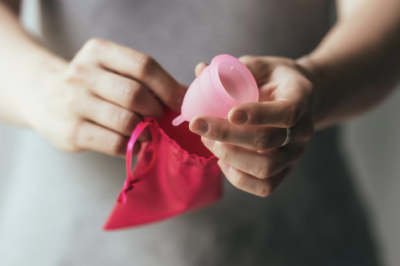
Most women have between nine and 12 periods a year, and more than 500 in a lifetime. That equates to approximately 20-25 tampons per cycle. A lot of women also switch to a sanitary pad at night, to reduce their risk of developing toxic shock syndrome.
Tampons and pads are a necessity for many women, but they exact a huge cost on the environment. In these more enlightened times, we are becoming increasingly aware of the damage mankind is inflicting on the environment, so let’s take a look at why every woman should swap out their tampons and sanitary pads for an environmentally-friendly menstrual cup.
There was a time when women used scraps of absorbent cotton and other found materials to mop up their menstrual blood, which were washed and reused repeatedly. Then technology came along with the invention of convenient, disposable, and discrete tampons and sanitary pads.
Plastic Use in Tampons and Sanitary Pads
Modern tampons and sanitary pads contain plastic. And, as we know, plastic is harmful to the environment in a million ways. It isn’t just the main product that contains plastic in the applicator, inner layer or string; tampons are often wrapped in plastic. Even the synthetic ingredients that soak up menstrual fluid contain plastic. Unfortunately, even though much of the plastic used in the production of tampons is recyclable, it isn’t recycled for sanitary purposes.
Most used tampons and pads end up in landfill sites, where the plastic elements don’t degrade. Researcher Ann Borowskidiscovered that the average woman uses and discards around 40 years’ worth of sanitary products. These products will last for around 500 years in landfills, so that’s 449 years and 11 months after they served their purpose.
Not all sanitary products are put in the trash. Some are flushed down toilets and thanks to poor sewerage systems, they end up in our oceans, along with tons of other plastic waste.
Cotton Production
In addition to the horrors of plastic, one of the other raw materials used in the production of tampons and disposable pads is cotton. Cotton production is a thirsty crop that requires a lot of water. Most industrial-scale cotton crops are also soaked in insecticides and pesticides, which are terrible for the environment.
Toxic Chemicals Leaching into the Environment
Furthermore, the adhesive used in sanitary pads is a pollutant. Not to mention the fact that tampons and pads contain other toxic chemicals, including chlorine and dioxin, which pollute the air and groundwater once they end up in landfills.
But there is an alternative.
The Benefits of Using Menstrual Cups
Menstrual cups are a modern, environmentally-friendly solution to the harm caused by tampons and sanitary pads. Unlike tampons and pads, menstrual cups can be reused and will last for up to two years or more, as long as they are looked after properly.
Menstrual cups don’t absorb period blood – they act as a collection receptacle instead. Made from medical-grade silicone or rubber, menstrual cups are inserted into the vagina, like a tampon. They form a tight seal when fitted properly and are leak-proof – unlike tampons, which do leak when they reach their maximum absorbency capacity.
There are two main types of menstrual cups. One is bell-shaped. This sits lower down in the vagina. The other type is called a cervical cup; this sits higher up. Both are reusable. Instead of being discarded after use, they are emptied, rinsed, and reinserted. Unlike a tampon or pad, menstrual cups don’t need to be changed every four hours. They can be safely left in place for up to eight hours, so women can wear them overnight or during the day when out and about, without fear of toxic shock syndrome.
There is a technique to inserting a menstrual cup, but once you get the hang of using them, there is a lot to like. Because you don’t need to keep investing in expensive tampons and sanitary pads, you are saving money. But more importantly, you are doing your bit to save the environment.
When you consider the environmental cost of using tampons and sanitary pads, it makes a lot of sense to switch to menstrual cups. There are dozens of different brands available, in a range of sizes to suit all women. Try one today and see how easy it is!


